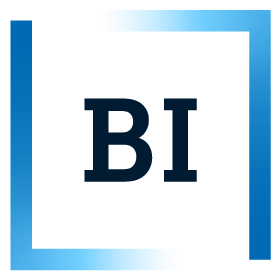PRK 3413 Introduction to Communication
 |
APPLIES TO ACADEMIC YEAR 2014/2015
|
PRK 3413 Introduction to Communication
Responsible for the course
Peggy S Brønn
Department
Department of Communication and Culture
Term
According to study plan
ECTS Credits
7,5
Language of instruction
Norwegian and english
Introduction
This course provides an introduction to communication for students interested in public relations and/or marketing communication. The course covers the history of communication study, theories important to all areas of communication, the contexts in which communication occurs, and the issues that must be faced by students of communication. Students receive an introduction to the various types of communication used by organizations: interpersonal, small group, corporate, marketing, organizational, mass communication, and inter cultural communication. It is designed to acquaint students with the broad and exciting field of communication and provide a grounding in the basic concepts that communication practitioners use to help their organizations succeed. The focus of the course is on individuals and communication which provides the basis for exploring effective communication between an organization and its various stakeholders.
Learning outcome
Acquired Knowledge
Students will acquire the basic knowledge enabling them to continue their studies in public relations and marketing communication.
Acquired skills
Upon completion of this course students will be able to:
- Define the fundamental characteristics of communication.
- Describe the characteristics of various communication contexts.
- Explain the key theories associated with the communication process.
- Describe career options in the field of communication.
- Describe the basic communication functions found in organizations and their differences.
- Communicate better on a personal level.
Reflection
Students will reflect critically and empathically on their communication, the communication of diverse others and the communication of organizations with an awareness of corresponding ethical implications.
Prerequisites
No particular prerequisites.
Compulsory reading
Books:
Wood, Julia T. 2013. Communication mosaics : an introduction to the field of communication. 7th ed. Wadsworth Cengage Learning. International edition
Collection of articles:
Brønn, P. S. Artikkelsamling for Introduksjon til kommunikasjon. Tilgjengelig på its learning
Recommended reading
Books:
Brønn, Peggy Simcic og Øyvind Ihlen. 2009. Åpen eller innadvendt : omdømmebygging for organisasjoner. Gyldendal akademisk
Cornelissen, Joep. 2011. Corporate communication : a guide to theory and practice. 3rd ed. Sage
Course outline
Communication Foundations
- Theoretical foundations
- Historical and contemporary perspectives
- Stakeholder theory and issues management
Communication Processes and Skills
- Perceiving and understanding
- Engaging in verbal and nonverbal communication
- Listening and responding
- Creating communication climates
- Adapting communication to cultures and social communities
Contexts of Communication
- Personal identity
- Personal relationships
- Groups and teams
- Organizations; managerial, public relations, marketing
- Mass communication
- Digital media and online
Computer-based tools
No specified computer-based tools are required.
Learning process and workload
This course will be based primarily on lecture but part of the learning process will require students to engage through observing communication in a variety of settings, recording their observations and presenting their analysis/findings to the class. 42 hours will be used in the classroom divided between lectures and presentations.
| Activity | Use of hours |
| Participation in lectures | 36 |
| Presentations | 6 |
| Preparation for lectures | 36 |
| Journal preparation | 18 |
| Home work and reading | 69 |
| Exam preparation | 35 |
| Total recommended use of hours | 200 |
Examination
The final grade in the course is based on following activities and weighting:
1) The students will maintain a journal based on instructions provided by the lecturer. Students will present material from their journals in groups of 3 to the entire class. All group members must be present for the presentation. Pass/fail
2) A two-hour Mid-term exam: accounts 40 %.
3) Project paper: accounts for 60 %. The project paper must be done in a group, the group shall consist of not more than 3 students, any student wishing to work alone must get special permission from the lecturer.
A final grade will be given based on all components of the evaluation. It is possible to fail part of the evaluation and still receive a grade for the course.
A re-sit exam for the mid-term will be given the same semester for those students who have a valid reason for missing the exam. (No re-sit will be given for either the case or the final exam the same semester.)
Examination code(s)
PRK 34131 - Process evaluation accounts for 100% of the final grade in PRK 3413 Introduction to Communication, 7.5 credits.
Examination support materials
Two-hour mid-term exam - native language-English dictionary
Project paper - all support materials
Re-sit examination
A re-sit is held in connection with the next scheduled examination in the course.
Students who are taking new examination must take the course all over including all parts of evaluation.
Additional information
